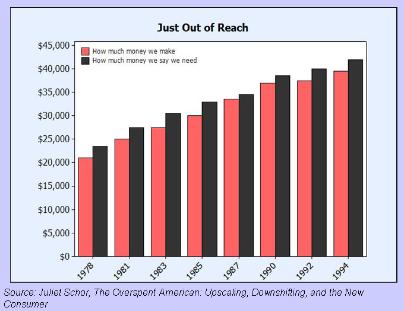Welcome to the ODAC Newsletter, a weekly roundup from the Oil Depletion Analysis Centre, the UK registered charity dedicated to raising awareness of peak oil.
The world is heading for a renewed oil crunch as soon as 2013 due to shrinking production capacity and growing demand in the emerging markets, according to reports from two investment banks. Both BofA Merril Lynch and Barclays Capital conclude non OPEC production is close to peak, meaning a shift back to reliance on OPEC for new capacity. They predict volatile oil prices with peaks in the same range as the highs of 2008 – and we all know what that did to the economy.
The annual survey from UK Oil and Gas, the industry association, illustrated the law of diminishing returns of post peak oil production. While вЂprobable’ and вЂpossible’ reserves are up by 60% on 2008, the volume of reserves in production or being developed is falling, as companies find new ventures uneconomic – despite an oil price of $75-$80 per barrel. UKOAG claims – in our view optimistically - that the region could still produce 1.5 million barrels of oil and gas equivalent or 50% of UK demand by 2020, and calls for further government support and tax relief in order to maximise recovery of the remaining reserves. However, since ВЈ25bn is required simply to upgrade North Sea infrastructure in the next five years, and since output has fallen 7.5% per year for most of this century, it’s hard to see their target being achieved. For excellent background commentary on the UK North Sea peak oil story from ODAC trustee Chris Skrebowski see p14 of the The Oil Crunch – Securing the UKs energy future .
The government’s plans to green the UK economy had mixed fortunes this week. On the upside, Mitsubishi and the Spanish company Gamesa are to set up wind turbine research and manufacturing facilities in Britain. On the downside, the Renewable Energy Association criticised the government’s incentives for energy derived from organic waste, claiming that they would make many projects commercially unviable. Worse, Drax announced it is cancelling plans to switch one of its plants from coal to biomass, claiming it would be cheaper to buy permits and keep burning coal. This demonstrates once again the urgent need for a carbon tax or least a floor under the carbon price.
Finally, spare a thought for the latest casualty of the peak oil age - the Hummer, the 4x4-on-steroids whose sales have been hammered by the oil price in recent years. Production is set to wind down after a deal to flog the brand to the Chinese – who says the Americans don’t do irony? – fell through. In the words of Klaus Paur, North Asia director for market research company TNS "The brand proposition of Hummer itself goes against the strategic outline of the Chinese government, which is mainly that they want to produce energy-efficient vehicles". SUV RIP.
View our Reports and Resources page
OilBarclays and Bank of America see looming oil crunchNon-Opec output decline restricts spare capacityCompanies 'can't afford' to drill for North Sea oil and gasBP, Shell Cost Cuts May Falter on Drilling InflationOil Set for Biggest Monthly Rise Since October on OPEC, Dollar Escalating Falklands oil dispute goes to UNRefinery protests are just delaying the inevitableGasPressure grows on energy suppliers to pass on price cutsBritish Gas profits surge on low gas pricesElectricityPutin threatens energy-sector oligarchsBloom Energy unveils 'power plant in a box'RenewablesMitsubishi to invest £100 million in UK wind turbine centreTurbine company in talks to open UK factoryTurbine design breathes new life into hopes for UK's renewable targetsU.S. wind capacity has more than tripled: reportBiofuelsDrax suspends plan to replace coal with greener fuelBiofuel power plant plan refused Waste not... Britain is lagging behind other countries in renewable sourcesUKElectric car prices will be reduced by grants worth thousandsSellafield considers cull as seagulls swim in radioactive wasteMPs say £37bn 'smart' power grid unlikely without state aidTransportHummer's demise a sign of the timesCase for third runway at Heathrow is deeply flawed, say opponentsWorld’s fastest container ships mothballed Oil
Barclays and Bank of America see looming oil crunchAmbrose Evans-Pritchard, The Daily Telegraph, 18 Feb 2010View original article
Bank of America and Barclays Capital, two leading oil traders, have told clients to brace for crude above $100 (ВЈ64) a barrel by next year, before it pushes relentlessly higher over the decade. This is a stark contrast from recessions in the 1980s and 1990s, when it took years to work off excess drilling capacity built in the boom.
"Oil has the potential to flirt with $100 this year. We forecast an average price of $137 by 2015," said Amrita Sen, an oil expert at BarCap. The price has doubled to $78 in the last year...
Back to top
Non-Opec output decline restricts spare capacityShashank Shekhar, Emirates Business 24/7, 22 Feb 2010View original article
Spare capacity, the market term for difference in supply and demand of crude, has remained constrained despite recession and a massive reduction in oil demand in 2009, Francisco Blanch, Global Head of commodities research at Bank of America Merrill Lynch, said in his latest report.
Blanch cited the decline in supply from non-Opec suppliers for the reduction in spare capacity without giving a figure. He warned geopolitics and protectionism may play spoilsport for the oil markets...
"Last year, we estimated that global non-Opec production decline rates averaged 4.8 per cent for fields producing between 2003 and 2008. When adding 2009, we find non-Opec decline rates have increased from 4.8 per cent to 4.9 per cent. This step up shaves one million barrels a day by 2015 from our non-Opec supply projections," Blanch wrote in his report...
Back to top
Companies 'can't afford' to drill for North Sea oil and gasRowena Mason, The Daily Telegraph, 24 Feb 2010View original article
A survey of 70 active companies by industry body Oil & Gas UK shows that there are more projects under consideration than at this time last year.
However, difficulties raising finance and the fact that the easiest – and therefore cheapest – reserves to extract have already been exploited means fewer projects are actually being developed. This will lead to a fall in the UK's domestic oil production and increase the need for imports...
Back to top
BP, Shell Cost Cuts May Falter on Drilling InflationEduard Gismatullin and Marianne Stigset, Bloomberg.com, 22 Feb 2010View original article
BP Plc and Royal Dutch Shell Plc may falter in their campaigns to save billions in oil and gas project costs as a resurgence in drilling and demand for engineers threaten to revive inflation in the industry.
Crude prices doubled to near $80 a barrel in the past year, prompting producers to resume projects put on hold during the recession. Oil and gas industry spending will rise 11 percent this year to $439 billion, according to Barclays Capital...
Back to top
Oil Set for Biggest Monthly Rise Since October on OPEC, Dollar Yee Kai Pin, Bloomberg, 26 Feb 2010View original article
Crude oil was poised for the biggest monthly advance since October, amid speculation the Organization of Petroleum Exporting Countries won’t increase output quota and as the dollar extended losses.
Oil was little changed in New York as traders bought back previously sold contracts after yesterday’s decline, betting prices may be sustainable around $80 a barrel. OPEC, which meets to discuss policy in March, is set to raise supplies to a 14- month high this month, according to a Bloomberg News survey. The dollar fell against 14 of its 16 major counterparts, bolstering the investment appeal of commodities...
Back to top
Escalating Falklands oil dispute goes to UNFrancis Elliott and Hannah Strange, The Times, 24 Feb 2010View original article
The diplomatic row over the Falkland Islands deepened dramatically after Argentina announced that it would take its protests over British oil exploration to the United Nations today.
At the Rio Group summit in Mexico yesterday, Buenos Aires won unprecedented support from other Latin American states for its demand that the UK stop drilling in waters near the islands...
Back to top
Refinery protests are just delaying the inevitableCarl Mortished: World business briefing, The Times, 24 Feb 2010View original article
Strikes, angry motorists, big financial losses and a dyspeptic President of the Republic have put Total, the French oil giant, under intense pressure to suspend, if not cancel, plans to shut down its Dunkirk refinery.
A strike by members of the communist-affiliated CGT union protesting against the proposed closure is causing the gradual shutdown of all six Total fuel plants in France. With only seven days of fuel supplies remaining, regional elections looming and French families preparing for half-term holiday driving, President Sarkozy has given marching orders to Christophe de Margerie, Total’s mustachioed chief executive — after Dunkirk, there will be no more refinery closures...
Back to top
Gas
Pressure grows on energy suppliers to pass on price cutsRobin Pagnamenta, Energy Editor, The Times, 23 Feb 2010View original article
Five of Britain’s biggest energy companies were facing mounting pressure to cut prices last night after figures from Ofgem, the industry regulator, showed the average profits they earned per household leapt 40 per cent this winter to the highest level in five years.
Ofgem said that net profit margins earned by the so-called Big Six companies — British Gas, ScottishPower, EDF Energy, N-Power, Scottish & Southern Energy (SSE) and E.ON — widened from £75 per average dual fuel customer last November to £105 at the start of this month...
Back to top
British Gas profits surge on low gas pricesMartin Waller and Robin Pagnamenta, The Times, 25 Feb 2010View original article
Low wholesale gas prices helped to boost 2009 profits at British Gas, the UK's biggest energy supplier, by 58 per cent to ВЈ595 million, Centrica, the company's owner, said today.
The figures, coming only days after Ofgem, the industry regulator, said that Britain's biggest energy companies were earning their highest profits for five years, will spark fresh concern that householders are not seeing the full benefit of low gas prices in the market...
Back to top
Electricity
Putin threatens energy-sector oligarchsCatherine Belton in Moscow, Financial Times, 25 Feb 2010View original article
Vladimir Putin hit out at some of Russia’s biggest tycoons on Wednesday for failing to make investments in the electricity sector, as record demand during the severe winter puts worn-out generation capacity under renewed strain...
Back to top
Bloom Energy unveils 'power plant in a box'David R. Baker, Chronicle Staff Writer, San Francisco Chronicle, 25 Feb 2010View original article
Bloom Energy Corp., one of Silicon Valley's most secretive startups, unveiled on Wednesday its long-awaited "power plant in a box," a collection of fuel cells that the company says can provide clean electricity to homes, office buildings - even whole villages in the developing world.
The Bloom Energy Server, a smooth metal box the size of a pickup truck, can generate electricity from multiple fuels while producing relatively few greenhouse gas emissions. With government subsidies factored in, power from the server costs less than power from the grid...
Back to top
Renewables
Mitsubishi to invest ВЈ100 million in UK wind turbine centrePress Association, The Independent, 25 Feb 2010View original article
Hundreds of new jobs are to be created under a ВЈ100 million investment in a new wind turbine research centre, it was announced today.
Mitsubishi said it was looking at a number of sites in north east England to carry out research into building the world's biggest turbine blades...
Back to top
Turbine company in talks to open UK factoryEd Crooks, Energy Editor, Financial Times, 25 Feb 2010View original article
One of the world’s largest wind turbine manufacturers is in talks with the government about setting up a factory in Britain.
Gamesa, the Spanish turbine company, is being urged by Iberdrola, the owner of Scottish Power, to build a manufacturing facility to serve the British market, according to Ignacio Galan, Iberdrola’s chief executive...
Back to top
Turbine design breathes new life into hopes for UK's renewable targetsAlok Jha, The Guardian, 22 Feb 2010View original article
Aerogenerator turns conventional windmills on their side, with a 100m tall V-shaped blade rotating on a vertical axis
A radical windmill design could hold the key to making offshore wind power more economical and helping the UK meet its ambitious renewable energy targets...
Back to top
U.S. wind capacity has more than tripled: reportUSA Today, 21 Feb 2010View original article
Wind capacity in the United States has tripled and is enough to meet U.S. electricity consumption, according to a new report co-authored by the Department of Energy.
President Obama has promoted renewable energy sources such as wind as well as nuclear power plants as ways to generate carbon-free energy...
Back to top
Biofuels
Drax suspends plan to replace coal with greener fuelBen Webster, Environment Editor, The Times, 18 Feb 2010View original article
Britain’s biggest power station has suspended its plan to replace coal with greener fuel, leaving the Government little chance of meeting its target for renewable energy.
Drax, in North Yorkshire, which produces enough electricity for six million homes, is withdrawing a pledge to cut CO2 emissions by 3.5 million tonnes a year, or 17.5 per cent...
Back to top
Biofuel power plant plan refused BBC Online, 24 Feb 2010View original article
An application to build a biofuel power station at Avonmouth, capable of powering 25,000 homes, has been refused by city councillors.
The plant, which would have been fuelled initially by palm oil, was attacked by critics who blamed the demand for palm oil for rainforest destruction...
Back to top
Waste not... Britain is lagging behind other countries in renewable sourcesSusie Mesure and Jonathan Owen, The Independent, 22 Feb 2010View original article
One of the most promising solutions to the UK's mounting waste problems is under threat after the Government set the price it will pay for electricity generated from organic waste too low, green campaigners claimed yesterday.
Farmers are aborting plans to build anaerobic digestion plants to convert animal slurries, manure and rotting vegetables into energy after the Government's climate change department made the proposed plants commercially unviable, according to the Renewable Energy Association (REA), which represents the industry...
Back to top
UK
Electric car prices will be reduced by grants worth thousandsBen Webster, Environment Editor, The Times, 25 Feb 2010View original article
Drivers who switch to an electric car will receive a government grant of up to ВЈ5,000 but may struggle to find somewhere to charge the battery.
The Department for Transport will announce today that from January it will provide grants worth a maximum of 25 per cent of the price of fully electric cars and plug-in hybrids, which run on electricity for the first few miles before switching to petrol...
Back to top
MPs say ВЈ37bn 'smart' power grid unlikely without state aidRowena Mason, The Daily Telegraph, 23 Feb 2010View original article
The market alone cannot be trusted to provide the financing for such an enormous undertaking, according to a report from the select committee on energy and climate change.
Experts claim a smart grid is necessary if the UK is to hit its targets on reducing carbon dioxide emissions through energy efficiency...
Back to top
Transport
Hummer's demise a sign of the timesJorn Madslien, BBC Online, 25 Feb 2010View original article
Hummer's suffering is about to be ended.
The lumbering giant is being put down by patriarchal General Motors, the American motoring giant 61%-owned by the US government.
It is a sign of the times...
Back to top
Case for third runway at Heathrow is deeply flawed, say opponentsPhilip Pank, The Times, 23 Feb 2010View original article
Opponents of Heathrow expansion take their challenge to the High Court on Tuesday, arguing that the Government’s case to build a third runway by 2020 is deeply flawed.
A coalition of seven London councils, three leading environmental groups, two local protest groups and the Mayor of London will argue that the plans submitted to Parliament one year ago do not match the proposals that had been consulted on in public...
Back to top
World’s fastest container ships mothballedRobert Wright, Financial Times, 22 Feb 2010View original article
Near the waterline inside the Maersk Beaumont lies the main reason why this new container ship is set to spend at least the rest of this year unused on a Scottish sea loch...
Back to top
What is Community Wind?Price drop means low interest rates















